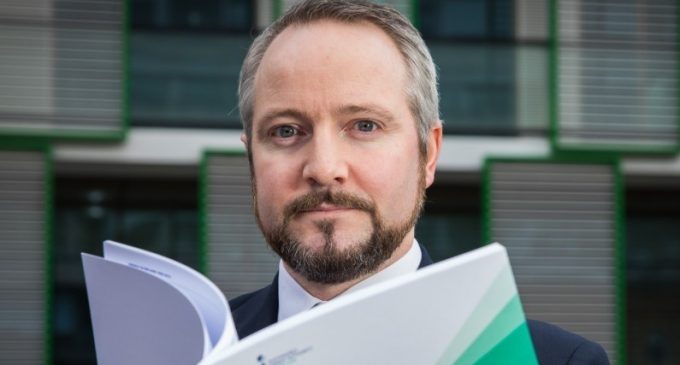SEAI Report Highlights Urgent Need to Reduce Reliance on Fossil Fuels

The Sustainable Energy Authority of Ireland (SEAI) has published their annual Energy in Ireland report. Energy in Ireland presents the latest national data and trends on energy use and renewable energy in Ireland. This year’s report shows a 0.5% increase in energy demand as the economy grew by 3.0%.
Ireland continues to face a challenge in reducing reliance on fossil fuels for transport, heating and electricity production, with over 90% of all energy used in 2017 from fossil fuels.
Commenting on the urgent need for action to address our energy challenges, Jim Gannon (pictured), CEO of SEAI, said: “Despite some areas of good performance in 2017, the bottom line is that we need to accelerate the pace of change. Collectively and individually, we need to use less as we take greater advantage of the renewable energy available to us here in Ireland.
“SEAI’s Government of Ireland funded grants have already supported energy efficiency improvements in 400,000 homes, which along with other measures like improved building regulations has resulted in the average energy used per dwelling in Ireland now being 30% lower than it was in 2005. The next phase of activity in the residential sector must be a rapid acceleration towards deeper retrofits using the technical, consumer, financial and supply chain learnings from SEAI’s deep retrofit and other programmes.”
The 2018 report also shows energy demand in transport increased by 2% in 2017.
“Transport represents the single largest sector of energy use, half of which is private cars. We need a rapid transition from diesel and petrol to electric vehicles. Government funded incentives of varying types have driven a rapid growth in electric car sales, doubling year on year since 2015. Ireland’s geographical extent makes it well suited to electric cars and, while not every driver can switch in the short term, we must ensure that it is considered a real option for the majority of new car purchases from now on. A transition to a largely electrified passenger fleet, along with the consideration of alternative fuels for commercial, public transport and freight is essential.”
The Energy in Ireland report pointed to a reduction of 2.1% in carbon dioxide emissions from energy used in 2017. This reduction is mainly due to increased electricity generation from wind with record levels of capacity installed in 2017, making Ireland a world leader in renewable electricity.
Jim Gannon said: “2017 represented a record year of renewables in our electricity system, and Ireland is a world leader in the level of wind deployed on our grid. However, 70% of our electricity still comes from fossil fuel, with both coal and peat remaining features of our generation mix. We must continue to develop our own renewable energy sources, with the most realisable opportunities represented by incremental increases to our onshore portfolio and significant opportunities in offshore wind, in addition to contributions from solar and domestic biomass production.
“The development of Irish sources of renewable energy, can create local jobs and encourage inward investment. Renewable energy is essential to support the transition to a sustainable economy – one that is not wedded to the use of imported fossil fuels.”
Highlights from Energy in Ireland for the year 2017
- Overall energy use increased by 0.5%, while the economy grew by 7.2% as measured by gross domestic product (GDP) or 3.0% as measured by modified gross national income (GNI*). Energy-related CO2 emissions fell by 2.1% and were 18% below 2005 levels.
- Ireland’s energy import dependency reduced from 88% in 2015 to 66% in 2017.
- Renewables made up 10.6% of gross final consumption relative to a 2020 target of 16%. This avoided 4.1 million tonnes of CO2 emissions and €439 million of fossil fuel imports.
- Renewable electricity generation accounted for 30.1% (normalised) of gross electricity consumption. The use of renewables in electricity generation in 2017 reduced CO2emissions by 3.3 Mt and avoided €278 million in fossil fuel imports.
- The carbon intensity of electricity fell from 480 gCO2/kWh in 2016 to 437 gCO2/kWh. This was as a result of growth in renewable generation and reductions in coal and peat use.
- Transport continues to dominate as the largest energy-consuming sector, with a 43% share of final consumption. Transport energy use increased by 2%.
- Industrial energy use increased by 3.4% driven by a 7.6% increase in output as measured by value added.
- Residential energy use fell by 2.9% though when adjusted for weather, it actually increased by 0.2%.
- The average household emitted 5.1 tonnes of CO2 of which 63% came from direct fuel use in the home and the remainder from electricity use. This is down from 8.4 tonnes in 2005.
- Final energy use in the commercial and public services sector increased by 4.2% – on a weather-corrected basis the increase was 7.4%.
For more information visit www.seai.ie.
























